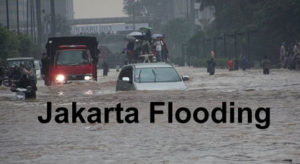by K. Hansen, January 25, 2020 in WUWT
Ted Nordhaus has an excellent article in the Wall Street Journal titled “Ignore the Fake Climate Debate”.
[ It may or may not be pay-walled for you — if it is, try searching the title in your search engine and use the link provided by Google/Bing/whatever — it may let you in or see here. ]

Jakarta, Indonesia, is not an exemplar of rising sea levels
Jakarta is a good proxy for many of the problems that Asian cities are having with sea levels — relative sea levels. Is Relative Sea Level a problem specific to Asian cities? No, but it is a common problem to Asian mega-cities as can be seen in this figure:
…
…
by Stephanie Roker, November 22, 2018 in WorldCoal
Indonesia’s consumption of domestic coal for power generation will almost double from 84 million t in 2018 to 157 million t by 2027. This increases power generation’s share of domestic consumption from 18.5% to 33.6%, which is likely to displace export tonnage.
Another factor contributing to the higher coal consumption is that Indonesia’s new power plants are designed to consume lower energy coal. This means more coal will be required per unit of electricity generated.
This increase in domestic consumption combined with potential government efforts to conserve coal reserves represents a downside risk for Indonesian exports.
Indonesia’s electrification programme to drive domestic coal demand
…
by University of California – Davis, September 27, 2018 in ScienceDaily
For the study, published this week in the journal Restoration Ecology, researchers installed 11,000 small, hexagonal structures called “spiders” across 5 acres of reef in the center of Indonesia’s Coral Triangle. Coral diversity is the highest on Earth in that region but is threatened by human activity, including overfishing, pollution and climate change.
Between 2013 and 2015, researchers attached coral fragments to the structures, which also stabilized rubble and allowed for water to flow through freely.
A CORAL SUCCESS STORY
Live coral cover on the structures increased from less than 10 percent to more than 60 percent. This was more than what was reported for reefs in many other areas of the Coral Triangle, at a cost of about $25 per square meter.
…
La géologie, une science plus que passionnante … et diverse

